Posted by · Leave a Comment
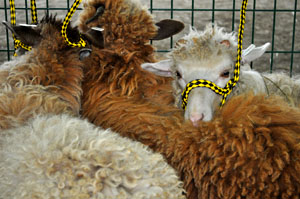 Rebecca Gunther, of Jersey West Farm had been e-mailing me weeks ahead of the Garden State Sheep Festival to, well, beg me to show some of my Navajo-Churro. (That Sunday, there was to be a Navajo-Churro competition and the judge would be none other than Ingrid Painter—decades-long breeder and N-C gal extraordinaire.) Was she kidding??? Me?? Show a sheep?? And in front of Ingrid Painter? NO WAY. I had been curious for years about exhibiting an animal in the show ring—but was just too ignorant to attempt it. After all, where would I start?
Rebecca Gunther, of Jersey West Farm had been e-mailing me weeks ahead of the Garden State Sheep Festival to, well, beg me to show some of my Navajo-Churro. (That Sunday, there was to be a Navajo-Churro competition and the judge would be none other than Ingrid Painter—decades-long breeder and N-C gal extraordinaire.) Was she kidding??? Me?? Show a sheep?? And in front of Ingrid Painter? NO WAY. I had been curious for years about exhibiting an animal in the show ring—but was just too ignorant to attempt it. After all, where would I start?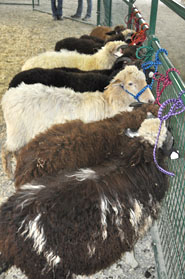
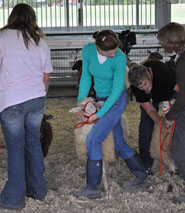
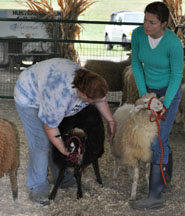 I was bound and determined NOT to let Oneida show ME up in the ring (after all, Ingrid was there!) so I kept her at my side with no slack in the lead and a hand firmly on the back of her neck and another cupping her jaw. Imagine my dismay, after Ingrid’s first few passes, when she asked me to move to one end of the line with Oneida. I had watched a few judgings before this and knew that the end where she was moving me was not where the winners had been repositioned. I probably had “rookie” stamped on my forehead! As beautiful and deserving as Oneida was, I was convinced I had done something as a handler to disqualify us. I was pretty sad.
I was bound and determined NOT to let Oneida show ME up in the ring (after all, Ingrid was there!) so I kept her at my side with no slack in the lead and a hand firmly on the back of her neck and another cupping her jaw. Imagine my dismay, after Ingrid’s first few passes, when she asked me to move to one end of the line with Oneida. I had watched a few judgings before this and knew that the end where she was moving me was not where the winners had been repositioned. I probably had “rookie” stamped on my forehead! As beautiful and deserving as Oneida was, I was convinced I had done something as a handler to disqualify us. I was pretty sad.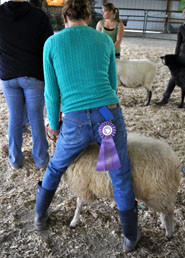
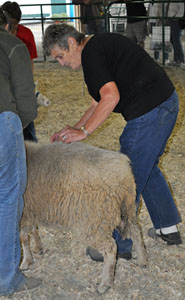 Not only was this rookie wrong about the line-up, Oneida captured a blue-ribbon for her class and we went on to grab the Grand Reserve ribbon!! I couldn’t believe it! Well, it wasn’t “we” after all. Oneida is a one-of-a-kind Navajo-Churro and Ingrid validated that. However, I’d like to think my grip on that little girl that day ushered our chances right along in the ring.
Not only was this rookie wrong about the line-up, Oneida captured a blue-ribbon for her class and we went on to grab the Grand Reserve ribbon!! I couldn’t believe it! Well, it wasn’t “we” after all. Oneida is a one-of-a-kind Navajo-Churro and Ingrid validated that. However, I’d like to think my grip on that little girl that day ushered our chances right along in the ring.Comments Off on Blog Post About our “How to Show Your Sheep” Webisode

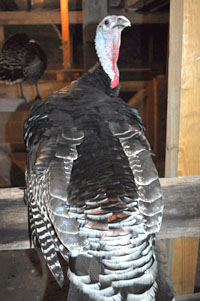
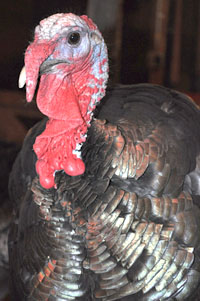
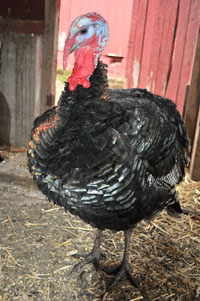
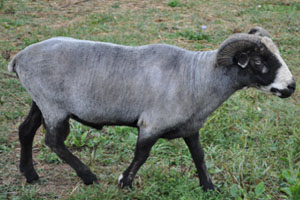
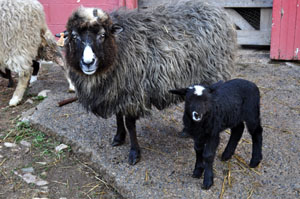
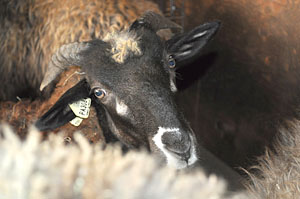
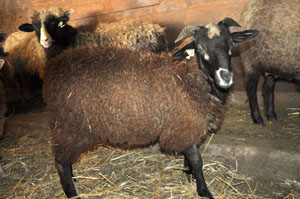
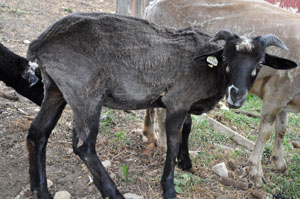
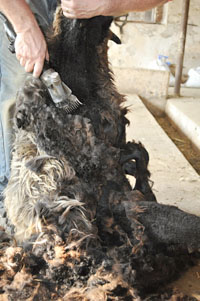 Navajo-Churro sheep need to be shorn twice a year. Their wool grows an inch a month.
Navajo-Churro sheep need to be shorn twice a year. Their wool grows an inch a month.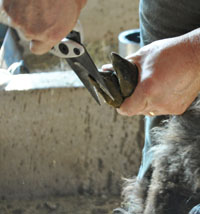 He’ll trim the hooves, de-worm (if we wish) – which just means he administers a “drench,” that is a liquid – and shear.
He’ll trim the hooves, de-worm (if we wish) – which just means he administers a “drench,” that is a liquid – and shear.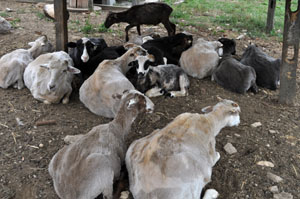 Sheep almost look like different animals after a shearing. It just has to feel good to have that “haircut” every six months or so – just look at how relaxed they all looked that next morning.
Sheep almost look like different animals after a shearing. It just has to feel good to have that “haircut” every six months or so – just look at how relaxed they all looked that next morning.
